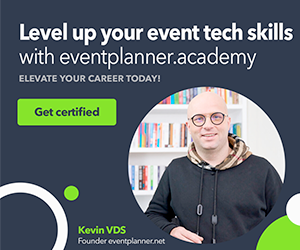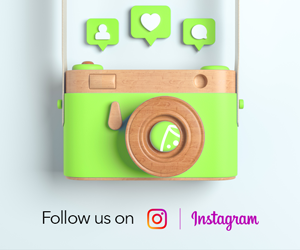Transcript
Hello, today I'm talking to Lars about the power of live, intuitive interaction and flow design. Would you like to know what this means exactly? Stay tuned.
Hi Lars, welcome to our studio.
Thank you for having me.
We're going to talk about the power of live. What is the power of live?
The power of live and then specifically talking about live events for me is going back to the very core of why we are creating events. So the trend that I see is recreating all these great events, because we have so many options today for technique, for interaction, social media, catering, lights... And before you know it, we're focusing too much on how big these events can be, and we're forgetting why they are there. And then we should think about why we are having all those groups of people, extracting them from their workplace or their homes, and bringing them to one spot. So for me the power of live is focusing in your event design or in your flow design or in the preparation of your event on the very aspect of: 'why are we bringing these people together?' So if I'm thinking of a story or something that really impressed me, it's almost never gonna be an example with that beautiful PowerPoint slide, or that wonderful graphic or a nice tweet someone sent. The example that I would give to you is that a couple of months ago I was doing this boot camp. A corporate boot camp. And there was a guy there... We were sitting with 70 people around a campfire and he was just sharing his story. And usually I would say that if you're an event professional you know that 70 people... You would need like microphones.
And some lighting...
And some lighting... And here we were with 70 people... We were, like we say in Dutch: hanging onto his lips. It's like a proverb we use. Everyone was just silent and breathlessly listening to his story. And it really made me think more and more about... Yeah, well I think that if we're talking about the power of live, we should really focus on: okay, we are here now. We are here right now live. So let's use that power to interact with each other and to make sure that your event is also designed to make this happen.
But the example you give is something that happens spontaneously. Does that mean that we are over organizing things?
We are definitely over organizing things. There's your quote for putting underneath this video. Lars for instance says: "we're over organizing things". There's always a risk. If you're an event professional and you want to do it right for your customer. And they will pretty much always be big corporates, right? So they have risk managers, communication managers, and they are just looking over your shoulder, making sure that you have everything arranged. And specifically in this situation; if we're arranging everything, This is where we're killing the opportunity for people to really interact. Obviously for me, in my role I'm usually connected to an event as, we would say: the chairman or the moderator. I would handle with what the event professionals gave me. So: "Lars, we have three keynote speakers, then we go to the break-outs. And you have no time at all, but it has to be interactive. This is pretty much the default. Go for it!" And then maybe now they say: "we also have a hashtag" or: "we use some kind of gadget or app to interact". But just making some time in your program. Just give me half an hour, or an hour. And we're not gonna plan it at all. Just give me the goal that you have with your event. And let's make sure that we can have people interact on that. So obviously there will always be differences in that program item, and this is what makes it so... What would be the right word? Maybe people are anxious to do this. The corporates are anxious for those kind of moments.
Because they can't predict what comes out of it.
Yeah, isn't that great? Obviously you don't want to just say: "Okay, the next hour of this program, people... Just interact!" It's not going to work like that.
But then you start doing things to make people interact. But does that always work?
Yes, well it depends on a couple of things. And this is why I'm very hopeful for the future of my profession as a moderator and a designer of these interactions, because I think this will always be a human's job.
You will not be replaced by a robot.
That's it. We see self-driving cars, we see drones delivering packages, but I think that creating interaction will always be a human's job. And then obviously you'll have some things to think about. Who will do this for you? Which person? Is it just going to be that enthusiastic guy from sales that has a nice sales pitch? Are you gonna put him in front of your 300 clients? I would say: really think through who you're gonna put there, and make sure that it's someone who likes to create the interaction. And then, yes, if it's someone who has the skills and the energy to do this, you can get every group to interact on their level. It's gonna be different if I'm doing this TEDx event with a group of young people in a couple of months, it's gonna be easy. The group is like 15 to 20 years old. If you say: "let's think about this", They'll just go: "I'll think about that".
The problem there will be stopping then.
That's it, yeah. So it's my job to make sure that we end on time and maybe put a break on it. But then obviously if you have about 600 accountants...
That's a bigger challenge.
Yeah, you put them in a dark, very standard room, the interaction will be different. But I've never had a group or people or participants, if you like, that didn't want to interact at all. Obviously there are some... You could step into some traps. If you just ask people... And again, it helps who's asking: "please talk to each other", there's a very big chance that they're just going to think: "well, not me man. I'll just play a little bit with my event app". So people would also need to be experiencing that it serves a goal. Just asking people to interact with you... "Why should I?" I guess you get the same ROI as... I heard from an organizer who built this beautiful event app, just for this event. It cost him 4,000 euros. And after the event I asked him: "how many people used the app?" And not even 8% of the people use it. Then we're talking about: is your interaction design... Do you feel like using it? Are you invited to use it? For a technical part of that -like an app or a hashtag- this goes, but also for the interaction that you're creating in the live setting. So if you're asking a question to the audience, is it a question that appeals to them? Does it make them want to answer to it? Does it calls to them to have an opinion on it? And then you really give them the space to do something with it. My professional opinion would be: it always needs to be more than just press A on the voting app or just send a tweet with a hashtag: "I don't like this event". This is where it's important to make sure that you're managing the interaction that you're creating.
In the beginning of the interview you mentioned the word 'flow design'. What's that about?
Flow design for me is when you have all the different parts that you want to use in your event, like even from location to catering to keynote speakers or interactive moderators, is zooming out and seeing this as a whole, like a director or writer would look at his play. Or maybe how a rockstar would look at his concert show. And then thinking about: "okay, what are we gonna do from the moment when people arrive until they go home". In which flow do we take them from the beginning to the end? Because it is gonna have an effect on the outcome and the output of your event. So if you want people to be invited to interact, let's say, or maybe it's gonna be a very serious session, you think about it. "Okay, if people are arriving..."
And create the setting for...
Create the setting, yeah. What kind of music is playing? And it sounds maybe so like an open door or something that's so obvious, But still I encounter a lot of events where maybe in the plenary session everything's thought through, like the slides are all connected and the speakers all come onto the stage. But then still it's not the right music that's playing when people come in, or you just get the experience that the surroundings and the facilities are not matching with what we are asking of these people.
So just think about it beforehand?
Think about it beforehand, and maybe think about it like Steven Spielberg would do when he's looking at a movie.
Make it a little bit dramatic, and...?
Put in some drama. Experience is a word I use a lot, because in my former profession I was linked to a lot of events and we did some theater work, and maybe in the end you've seen some of this cabaret and stuff like that. And then at a lot of events this would be the only element that has experience in it. Something for your senses. The rest would just be sitting and listening. You can totally design your event like that if you want to, but then the output would be the same as what you put into it. So think about creating an entire experience. And you can look at a lot of examples, like theater shows or concerts, because if I would ask you about the moment that you last cried or maybe were moved...
It was not at a PowerPoint presentation.
Probably not at a PowerPoint. So yeah, this is why I would say: just think it through. And I guess, and maybe that's specific on the profession of the people you use, ask them also how they could see that they could add to this role. If you're using a moderator, can he or she play a role in the flow design? Or maybe even your caterer has an idea on how to make people feel extra welcome with just this special treat when they arrive at your event.
Okay Lars, thank you very much for coming over.
Thank you, it was my pleasure.
And you at home: thank you for watching our show. I hope to see you next week!







